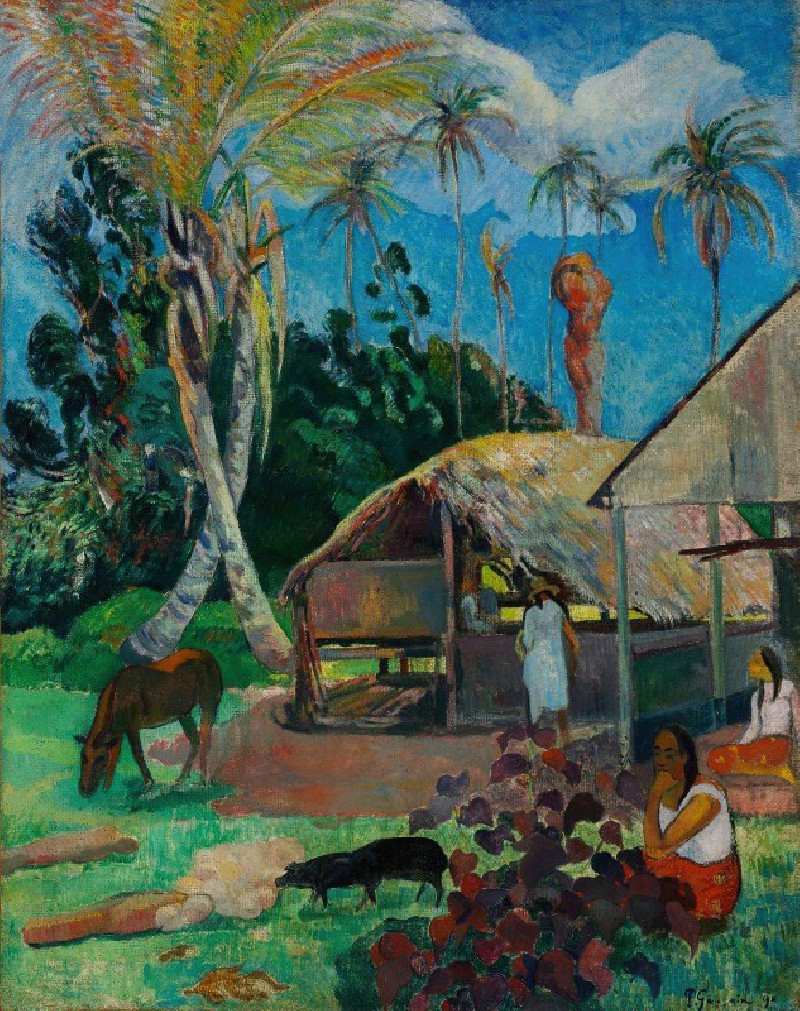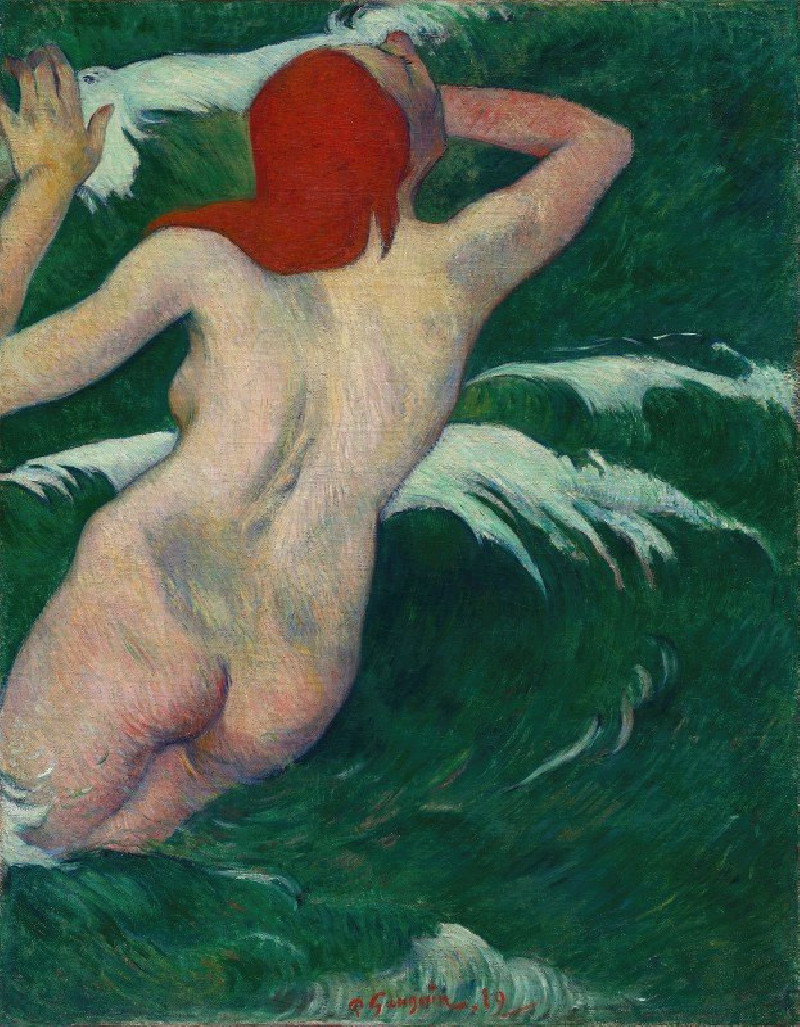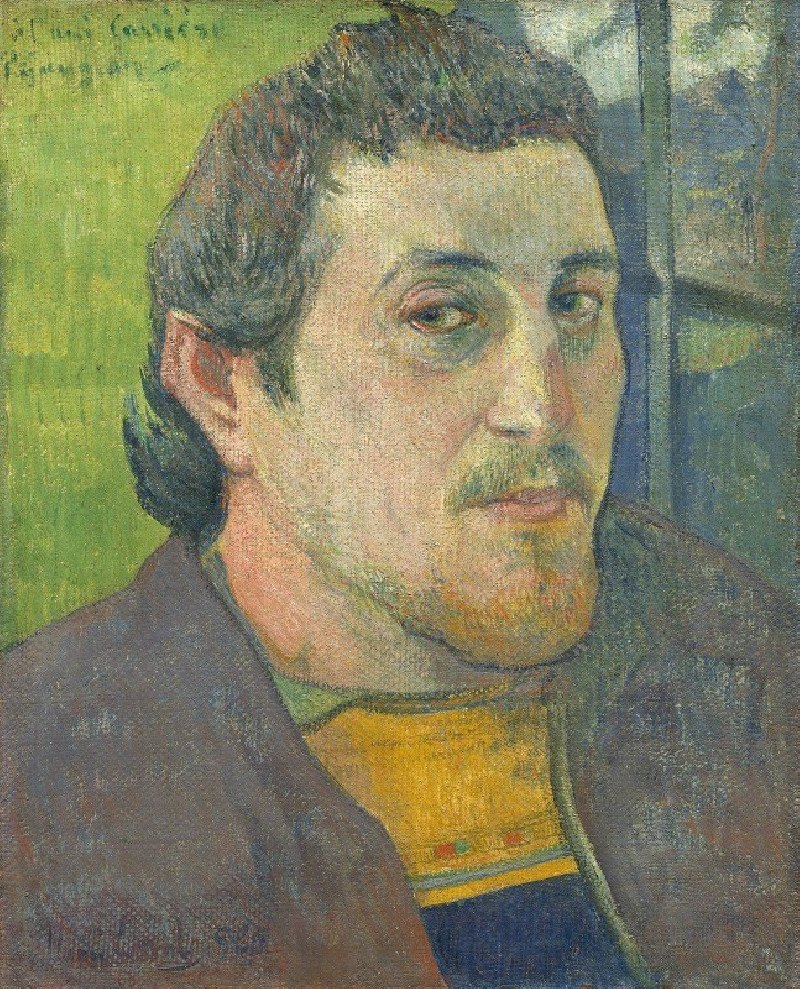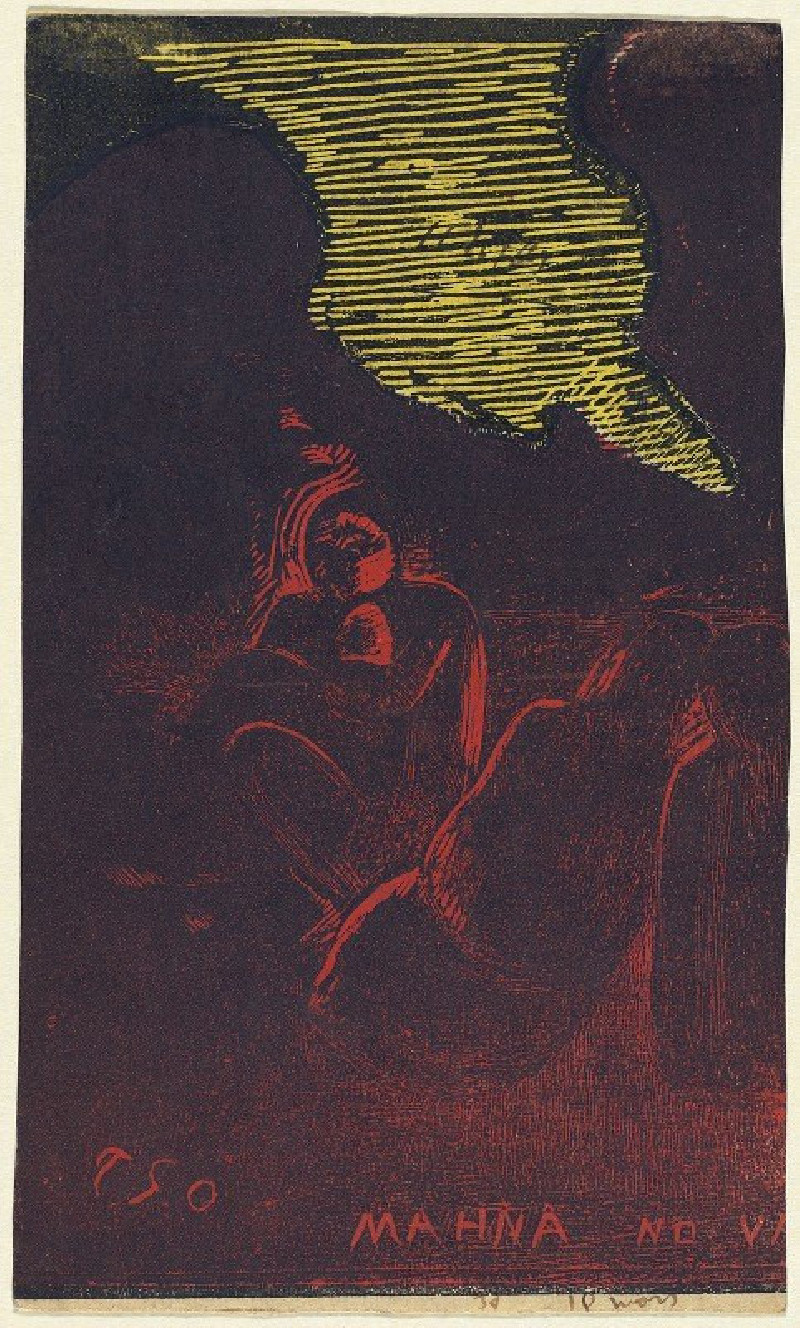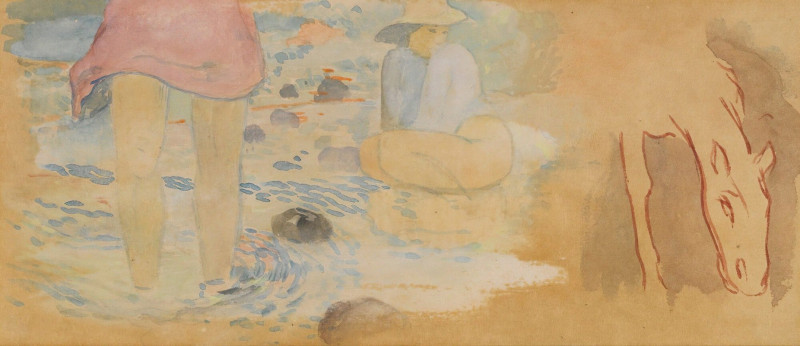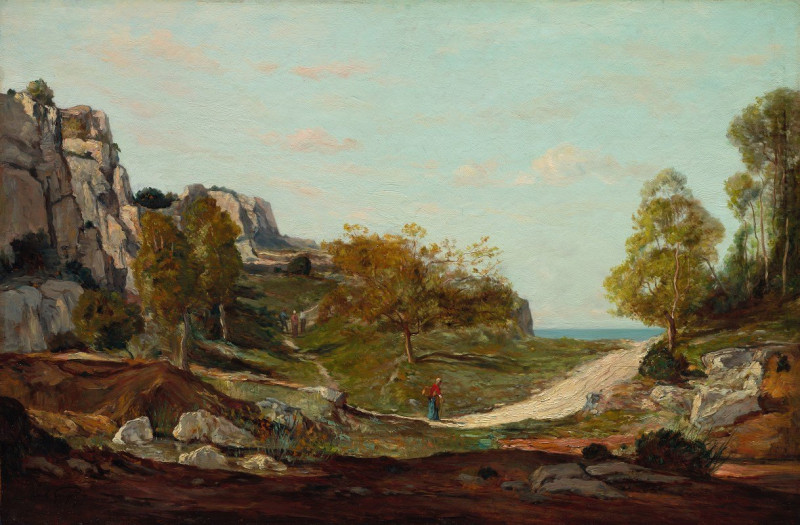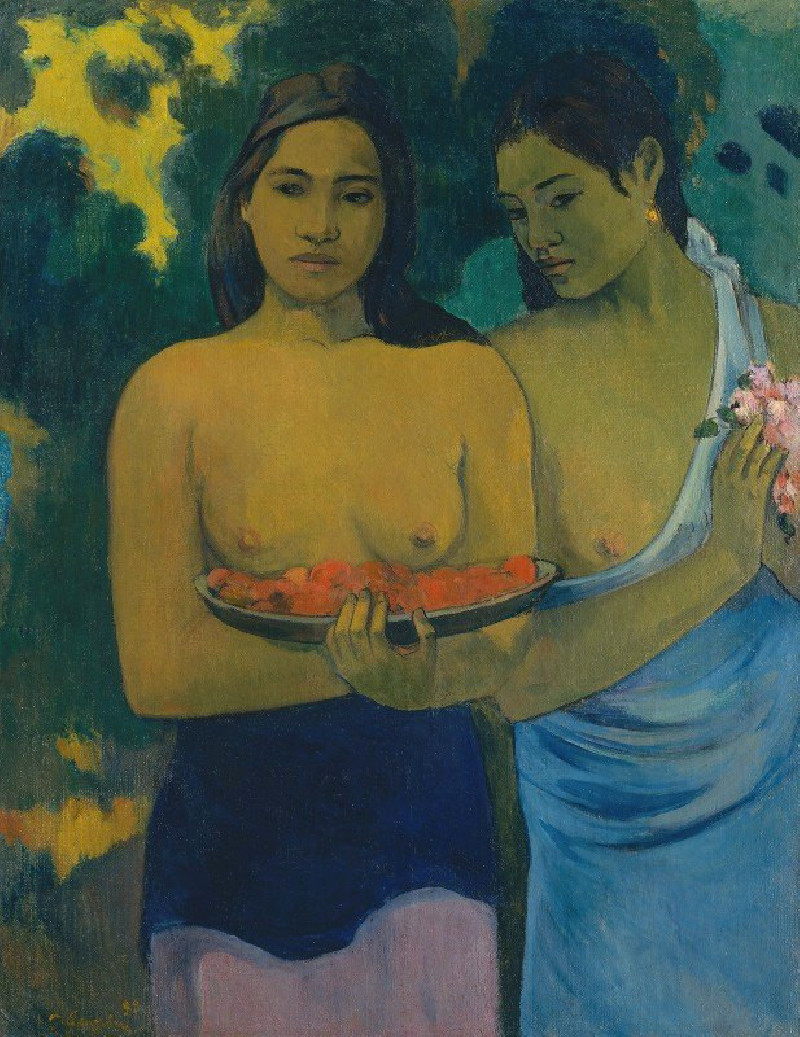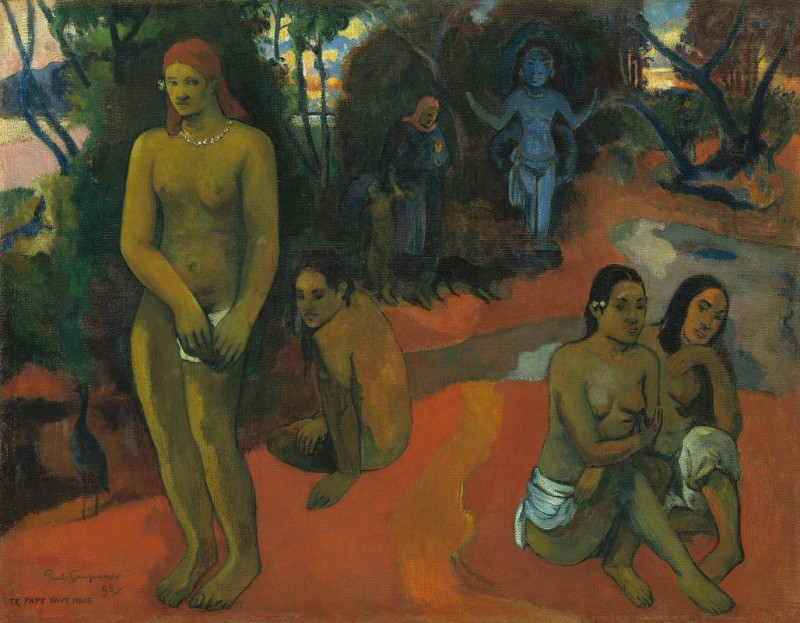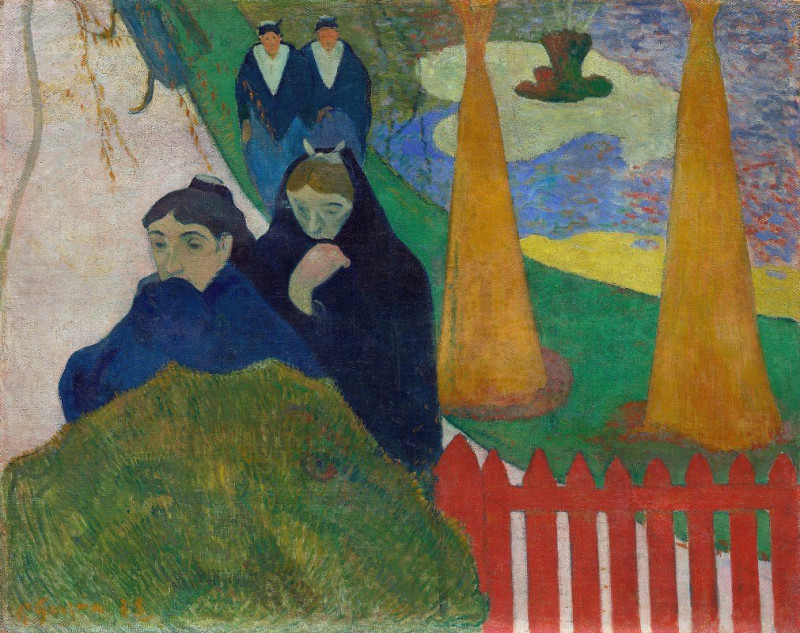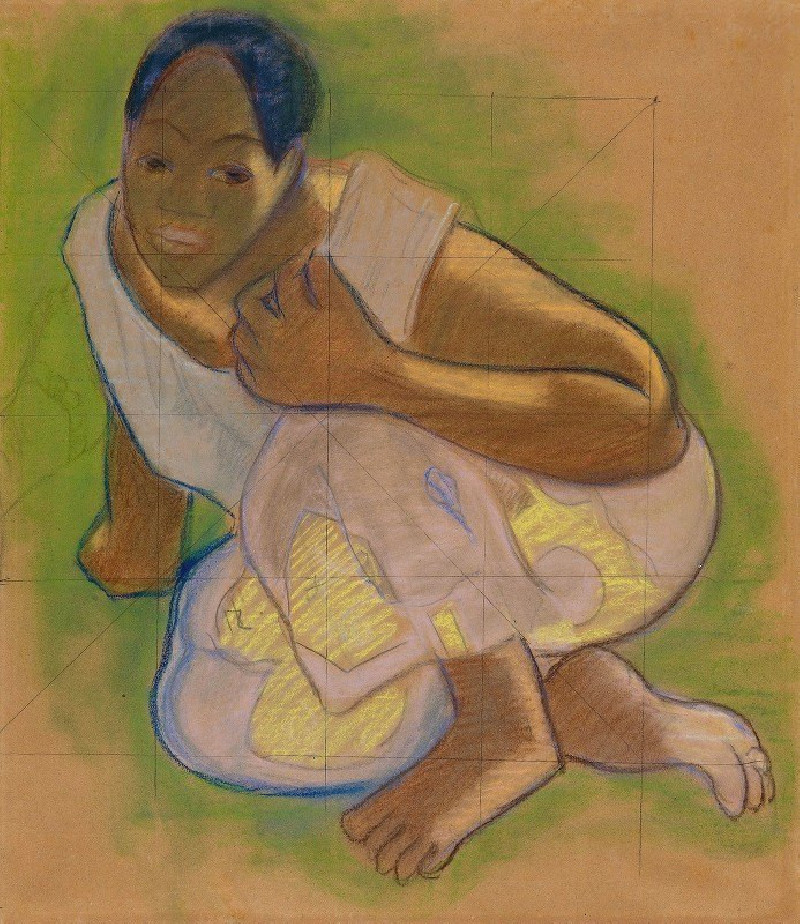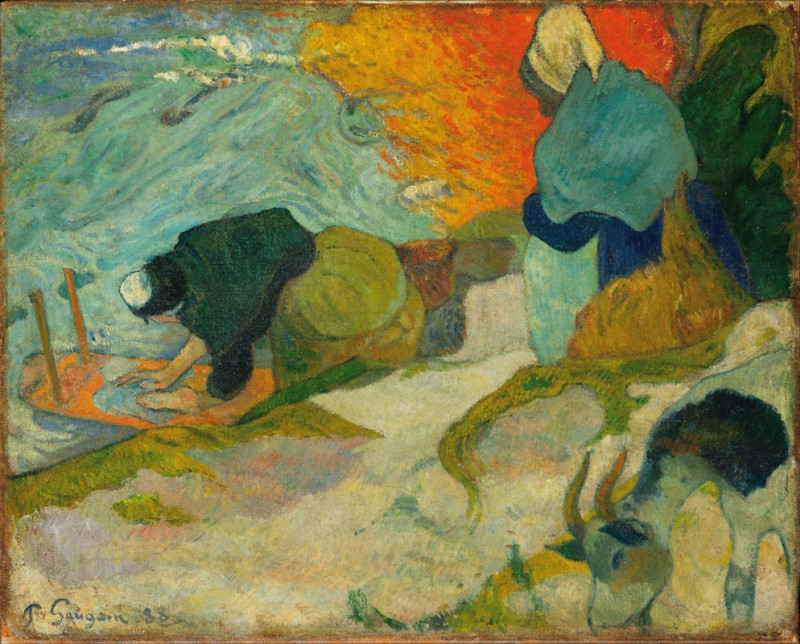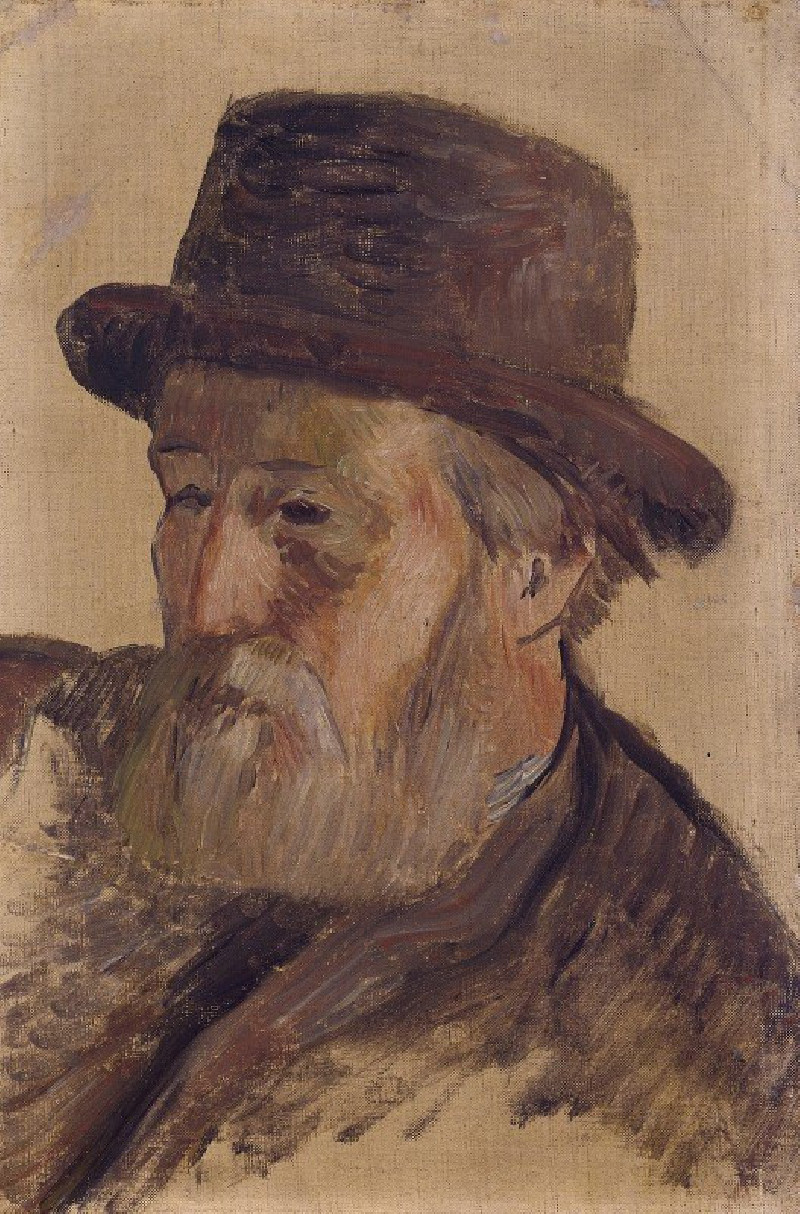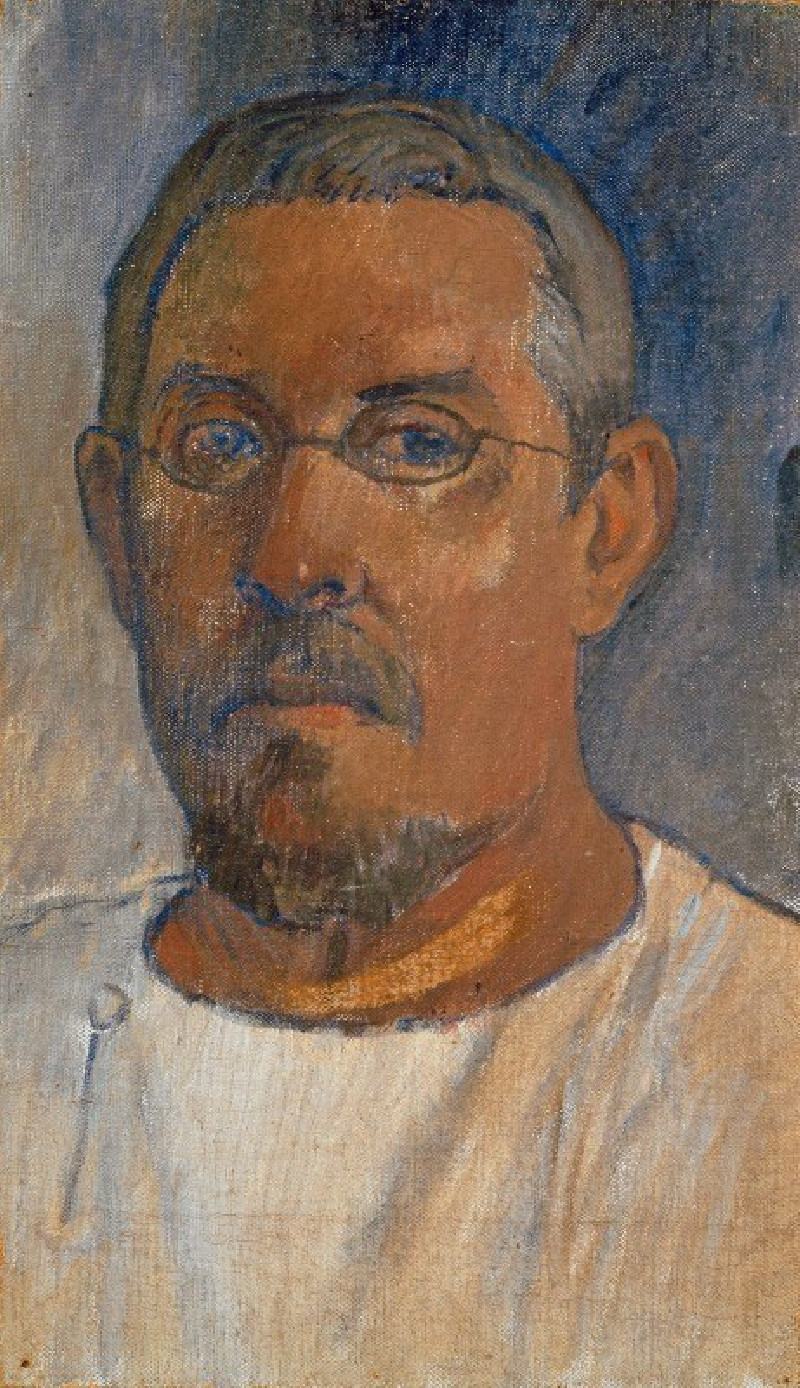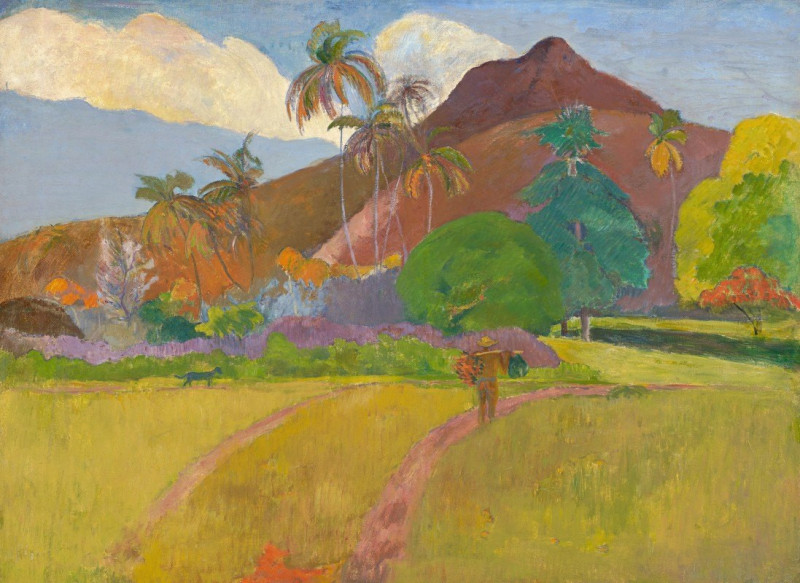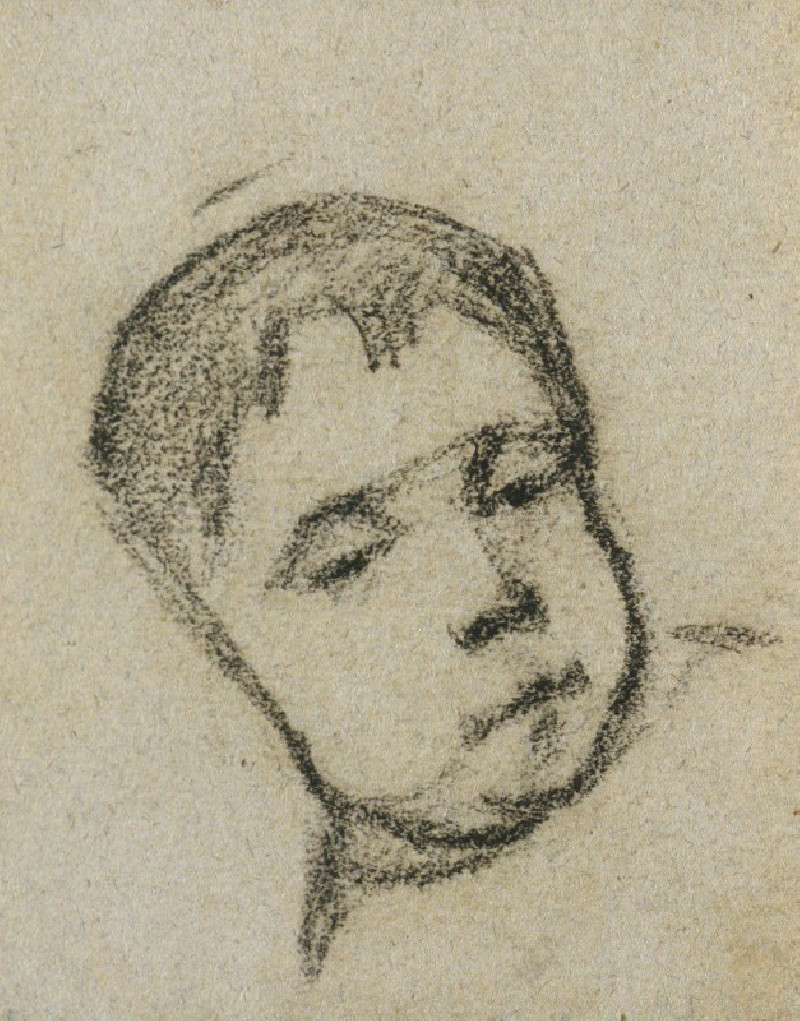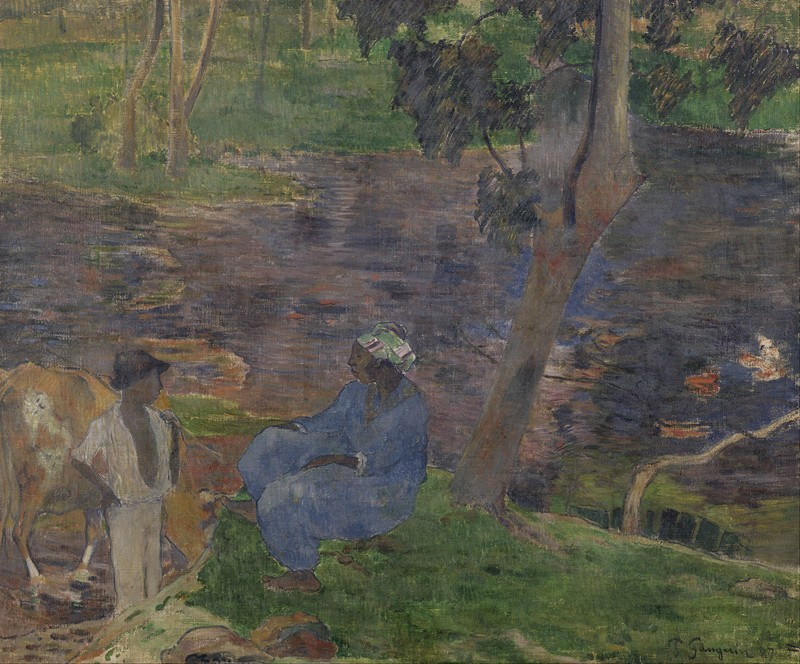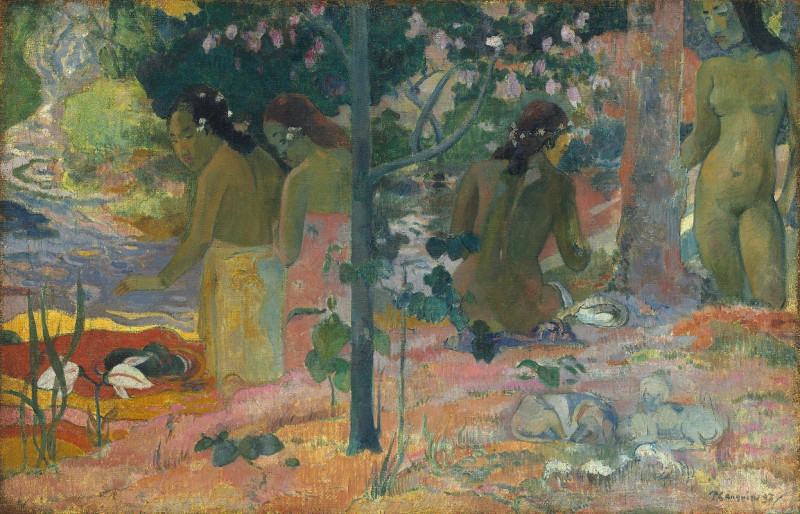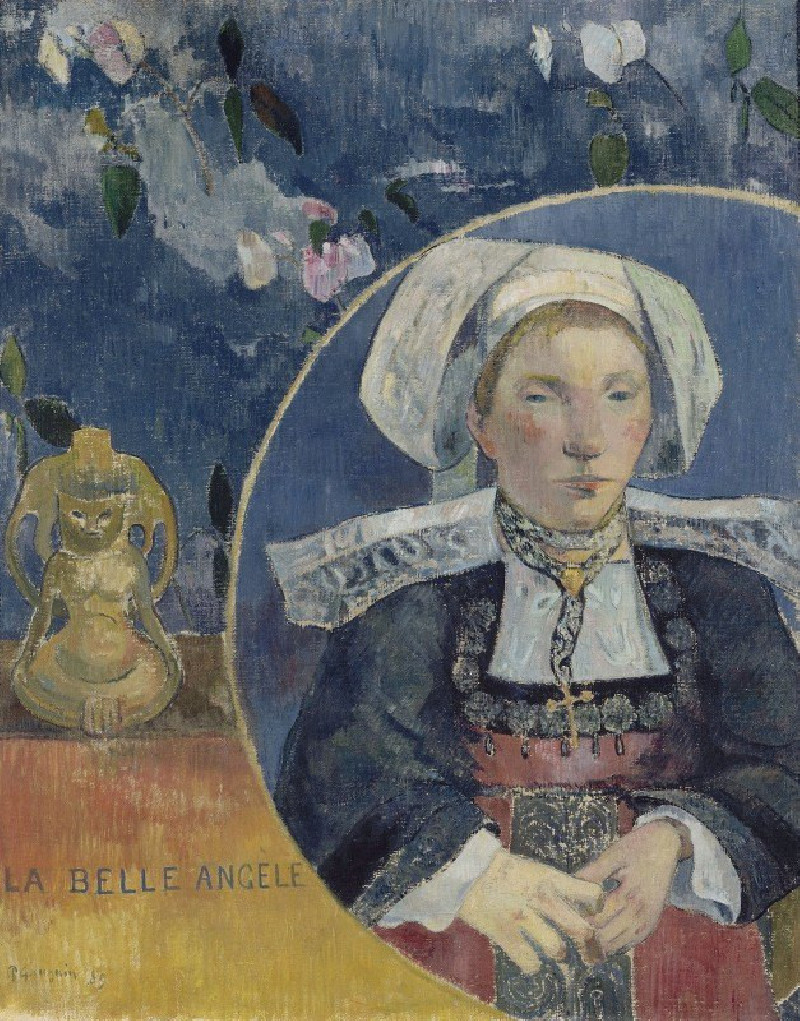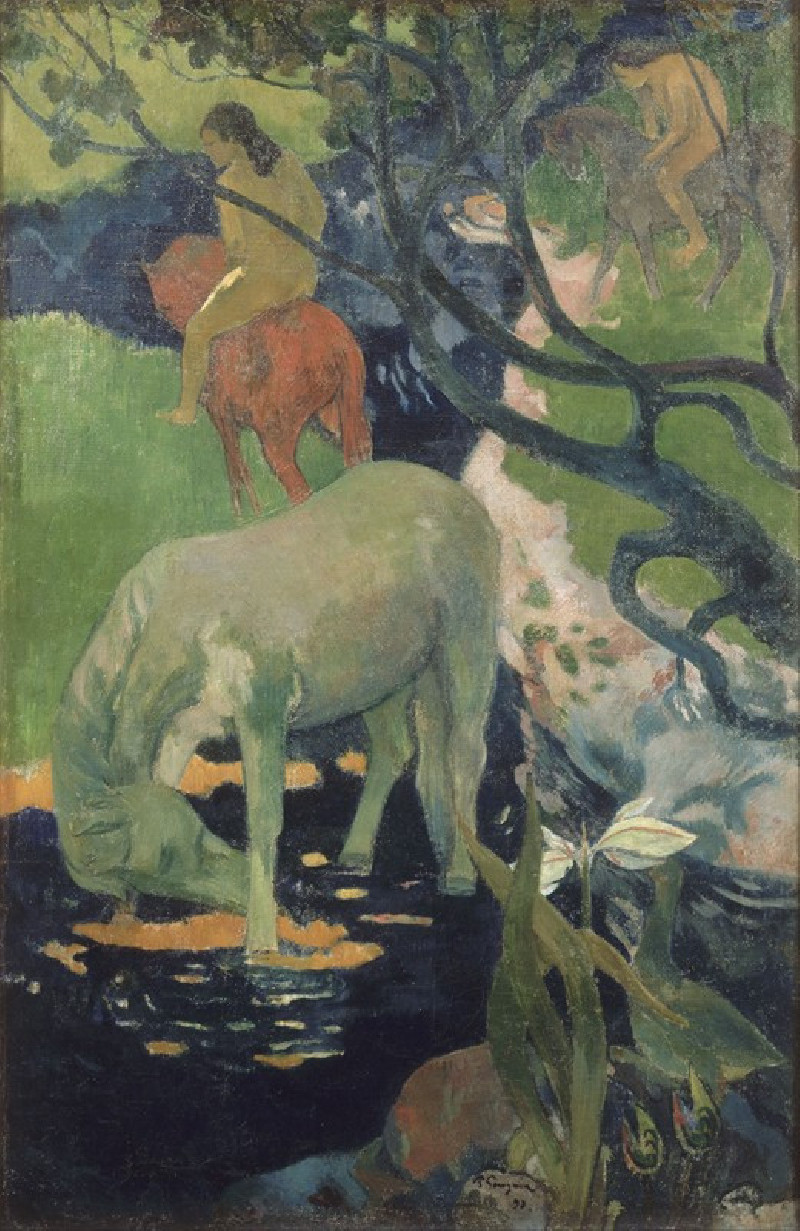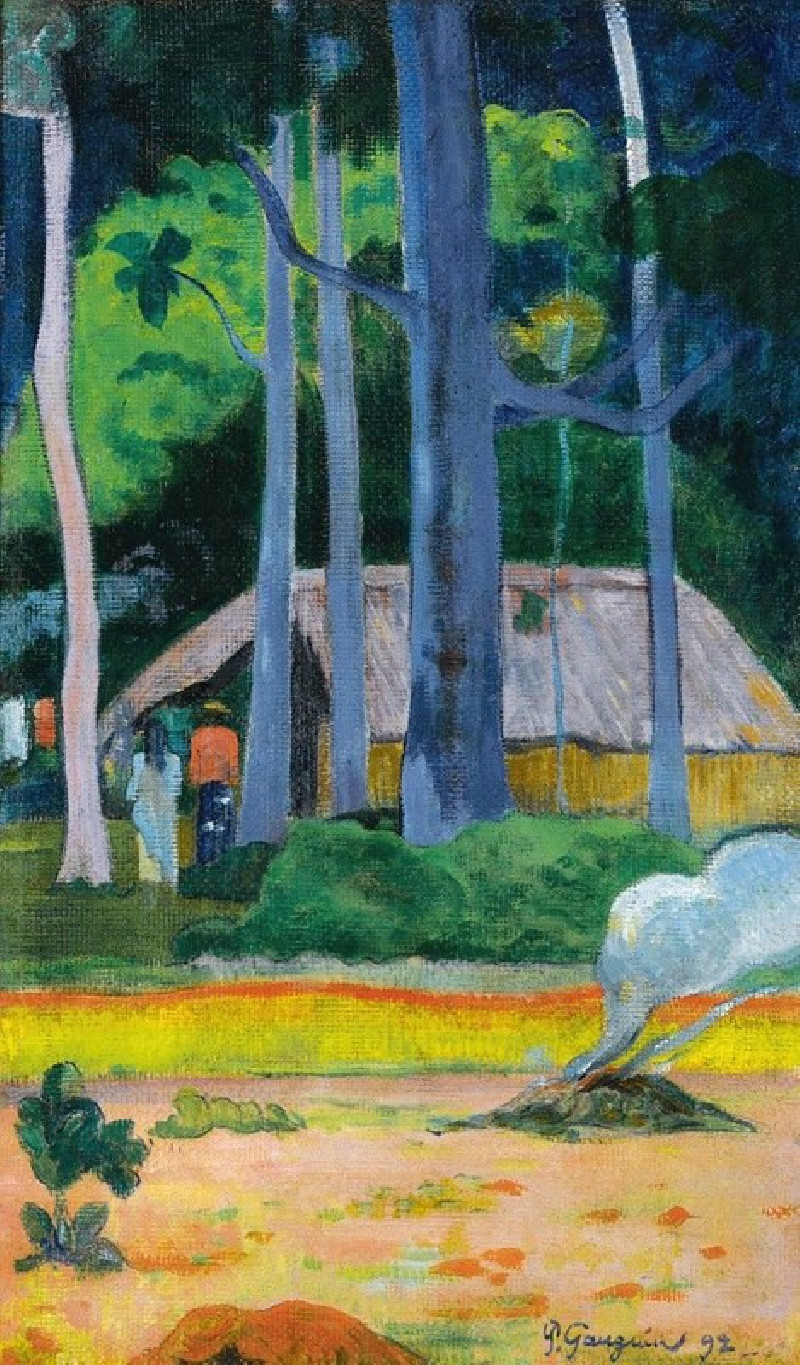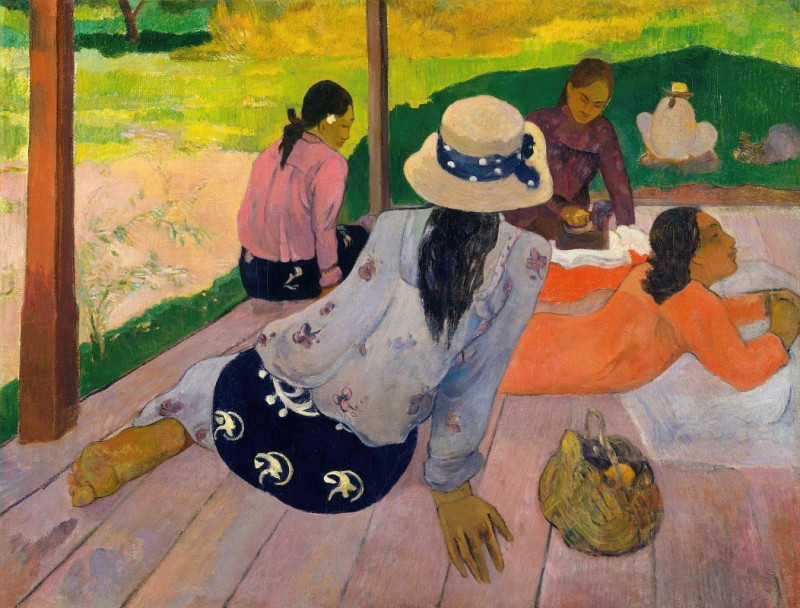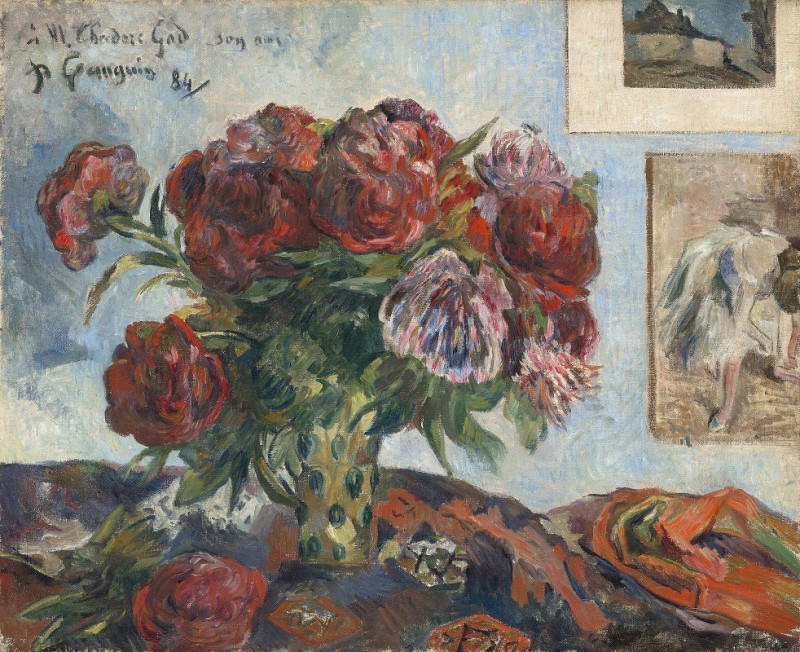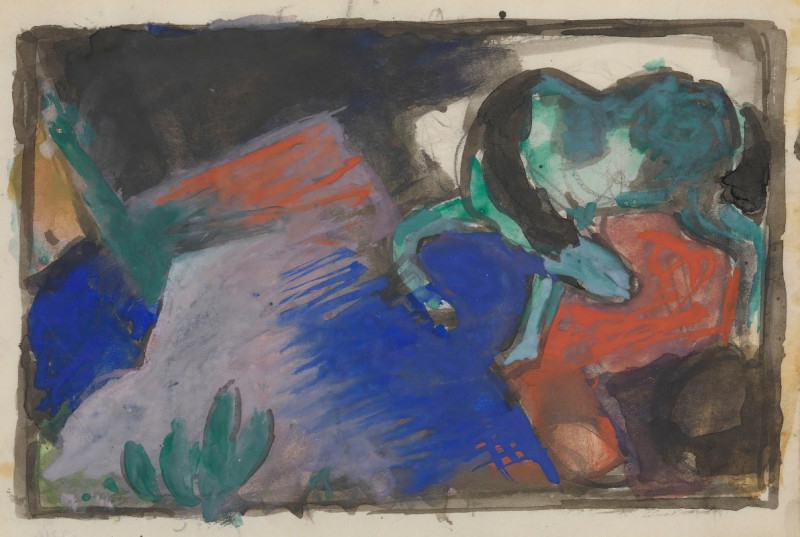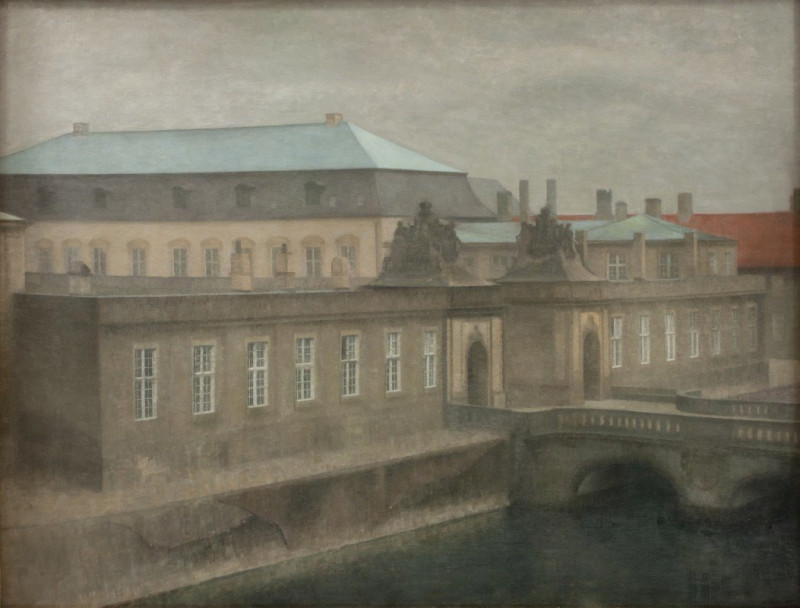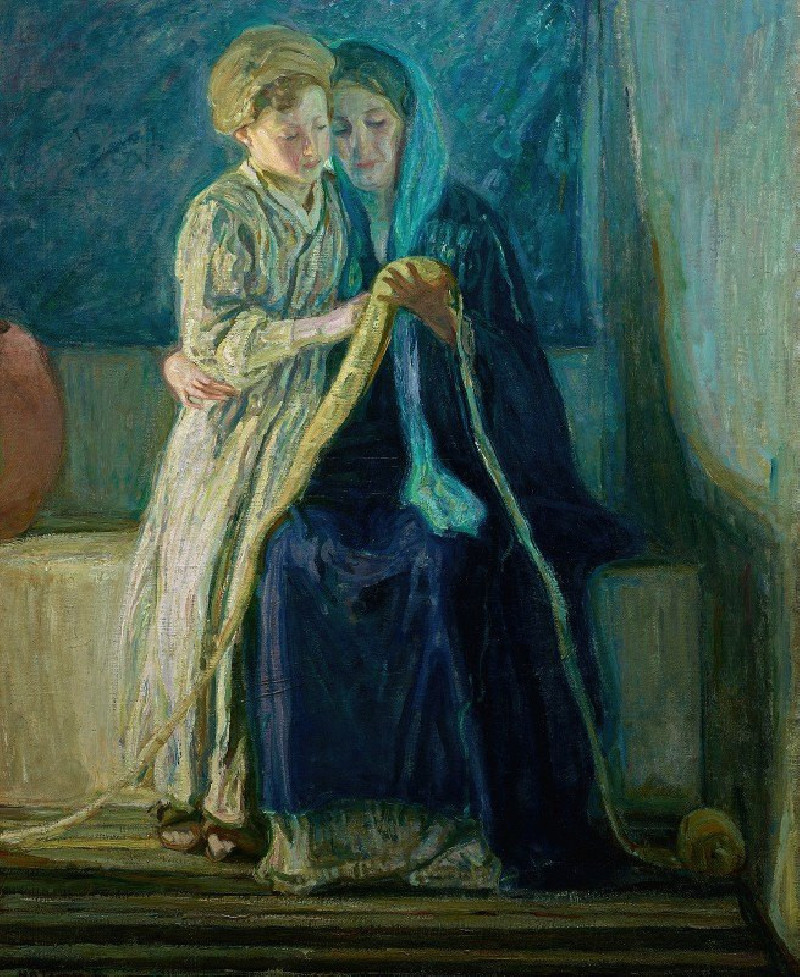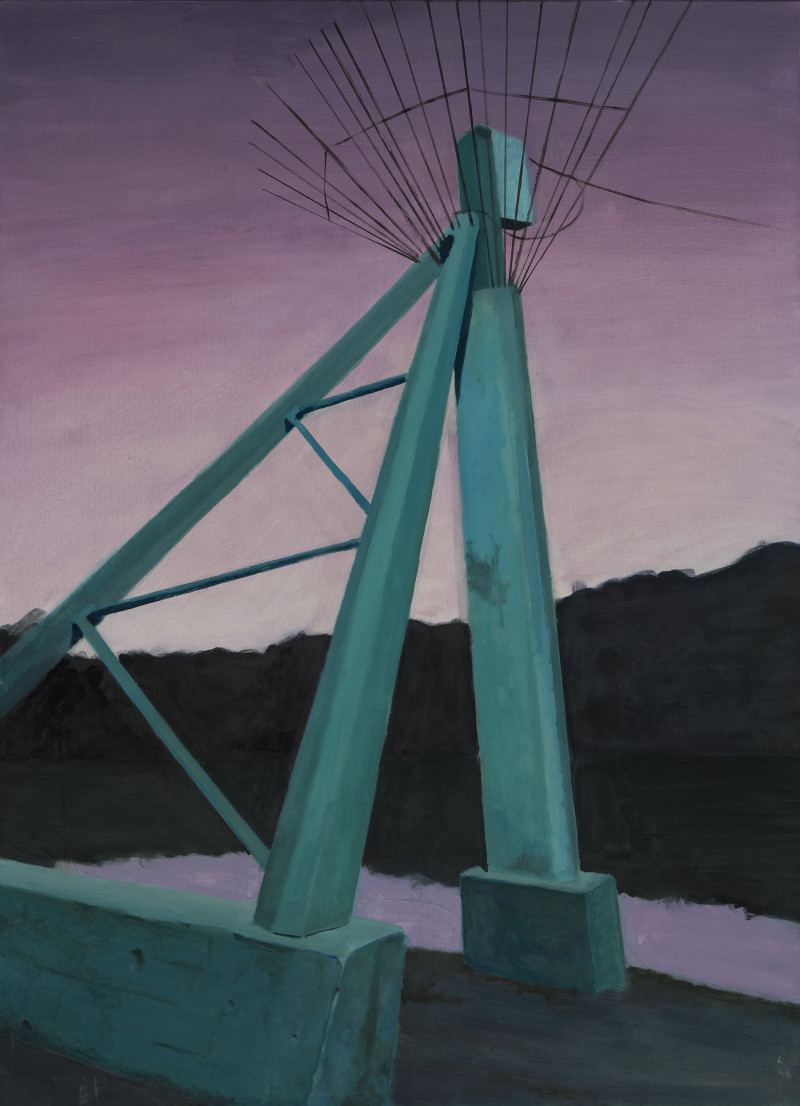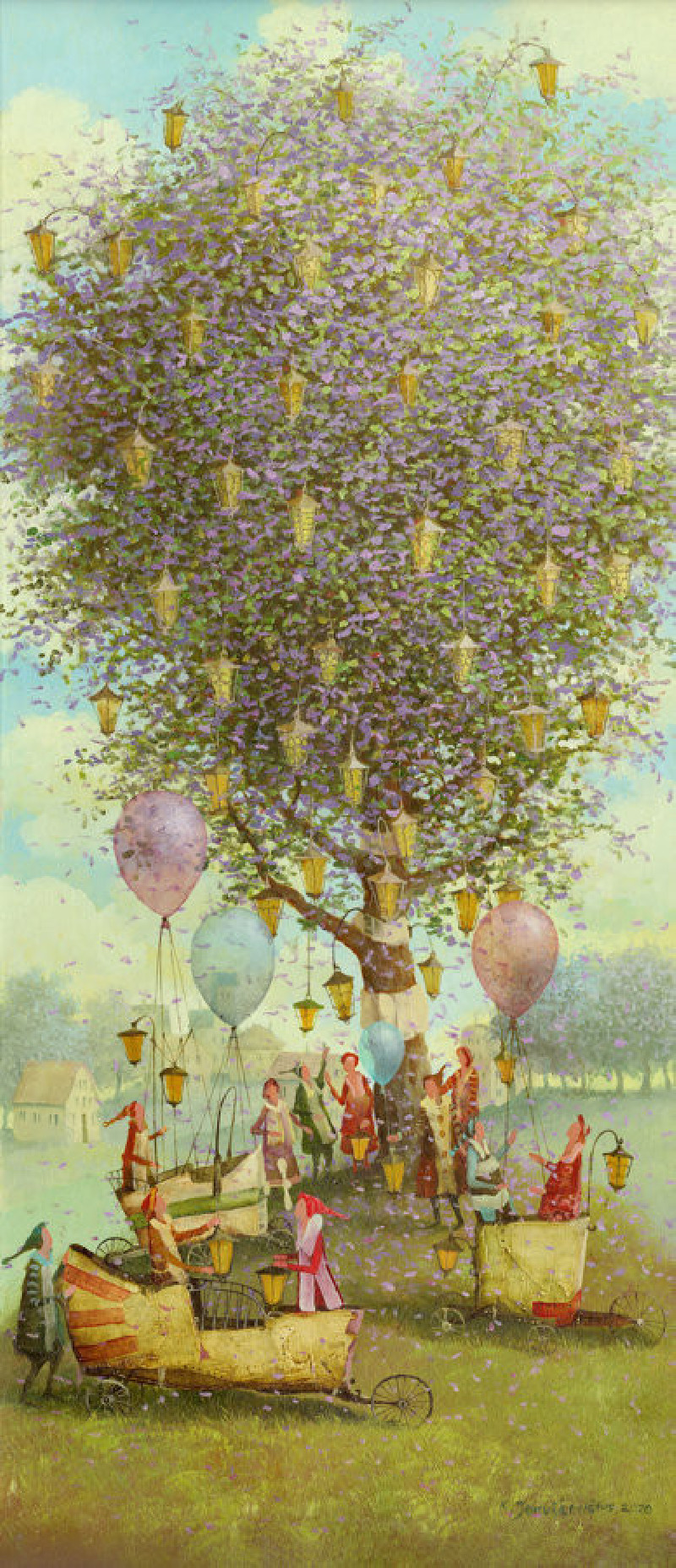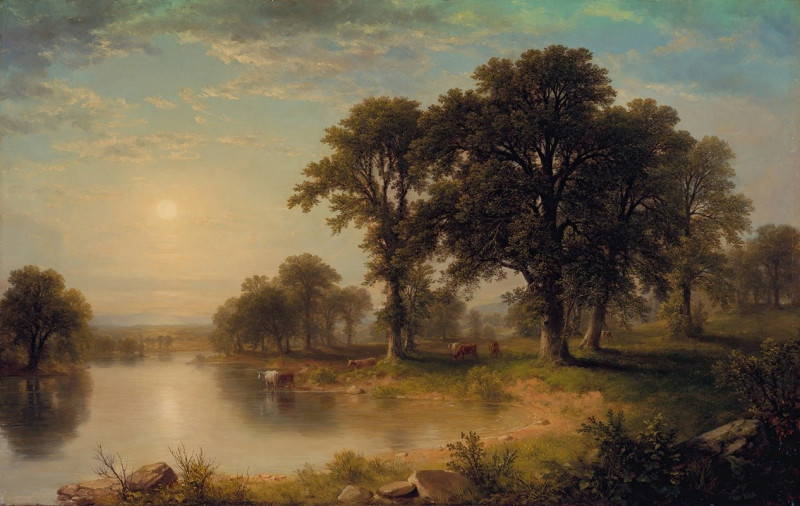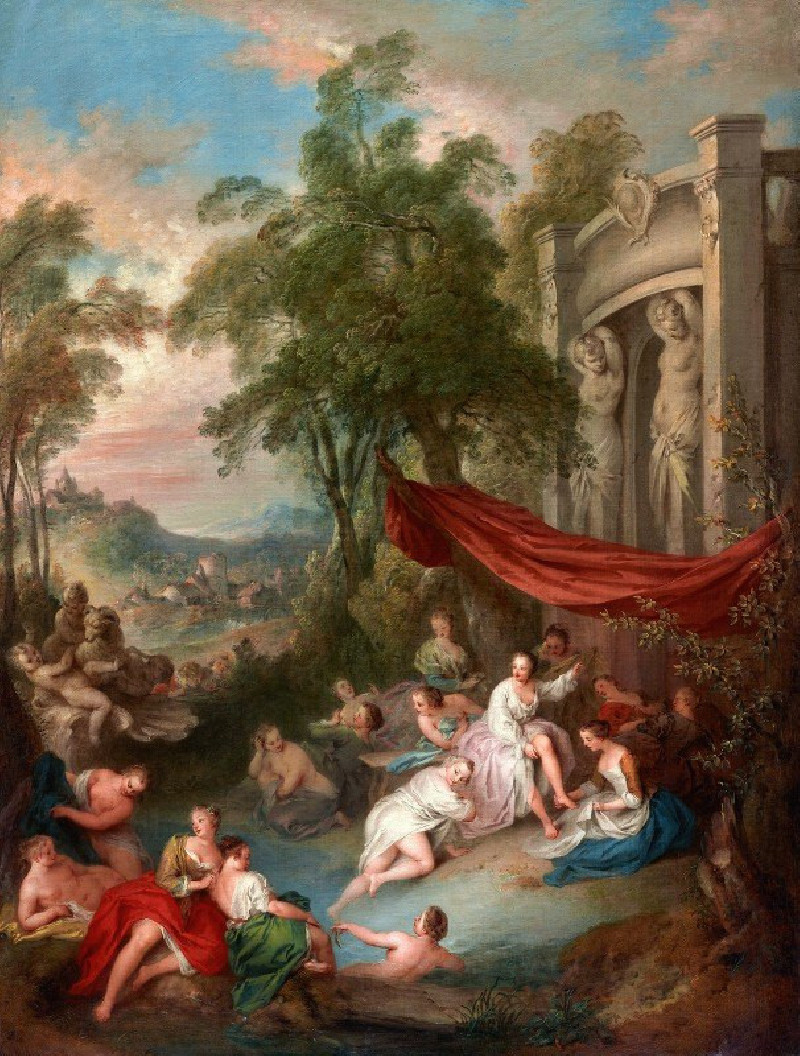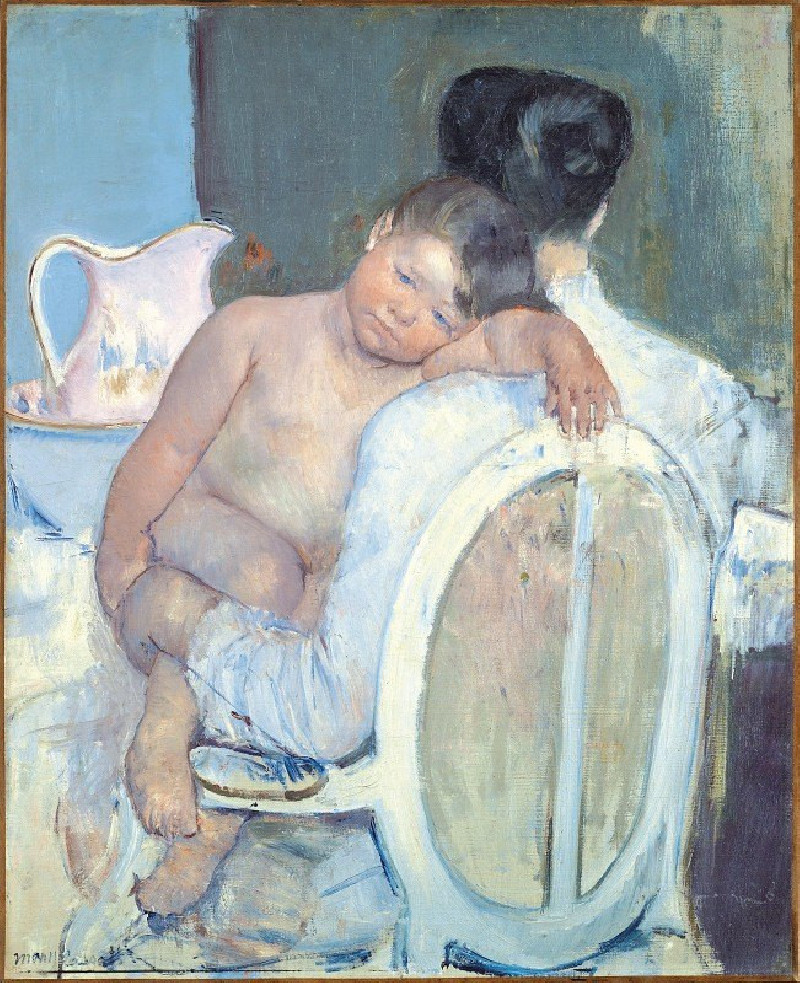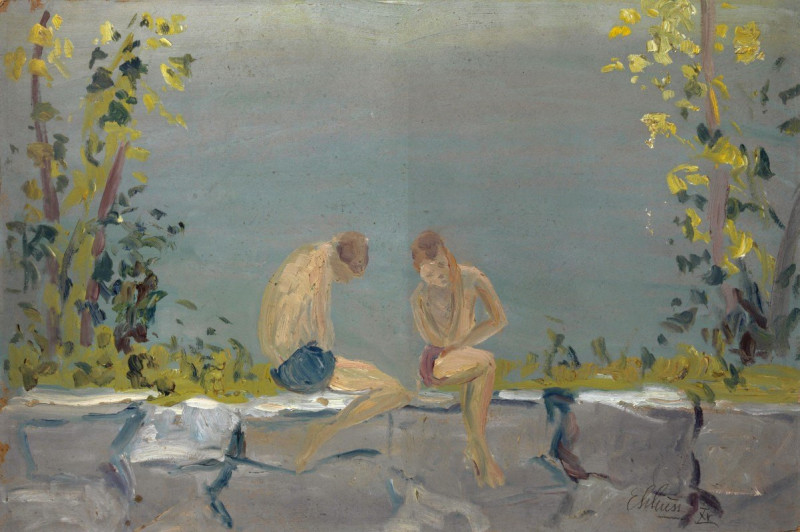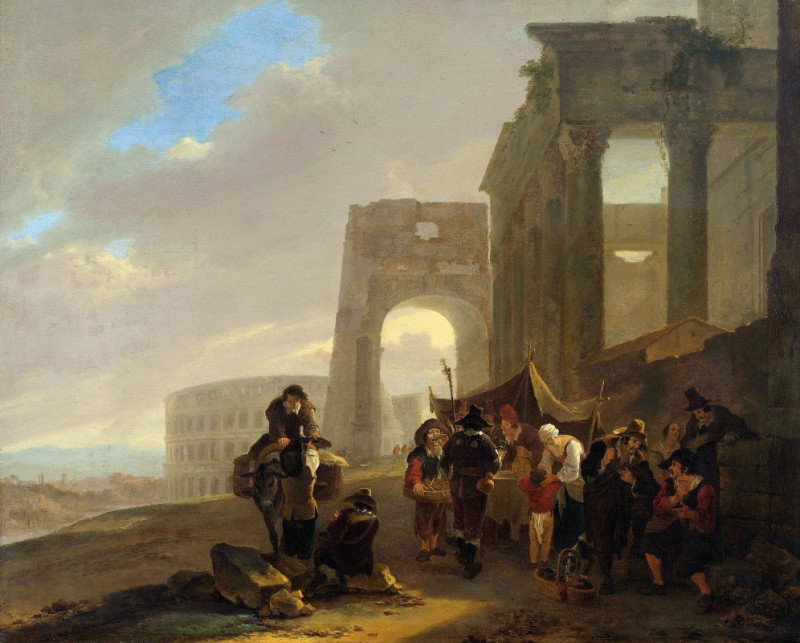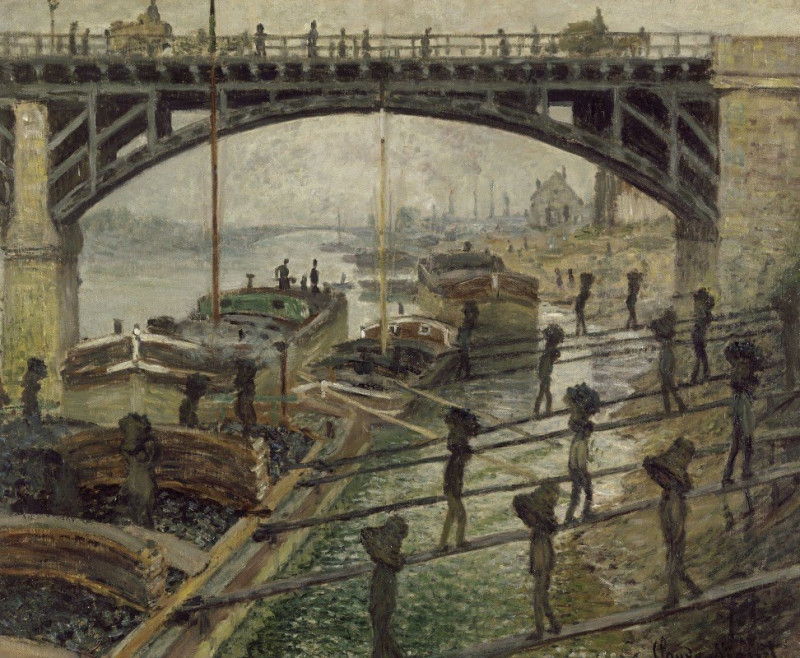Washerwomen on the Banks of the Durance (1866)
Technique: Giclée quality print
Recommended by our customers
More about this artwork
** "Washerwomen on the Banks of the Durance" is an enchanting depiction of everyday life painted by Paul Gauguin in 1866. In this exquisite landscape, Gauguin turns his brush towards the serene banks of the Durance River, capturing a moment infused with tranquility and the gentle rhythms of daily chores.The painting showcases a group of washerwomen engaged in washing clothes beside the river. The clear blue sky, spread expansively above, is dotted with soft, fluffy clouds, hinting at a breezy yet calm day. The river, rendered in shades of blue and reflecting the vivid sky, forms a delicate mirror to the activities along its banks.Foregrounded by rugged rocks and smooth stones poking through the shallow waters, the piece depicts the washerwomen at a distance, with their garments adding splashes of color to the otherwise muted natural palette of beige sands and light-colored cliffs. These women, absorbed in their work and interactions, provide a glimpse into the communal aspect of labor among rural French populations of the time.The distant landscape features rolling hills and a hint of vegetation, with the artwork giving an expansive view that leads the eye towards a horizon punctured only by the silhouettes of mountains. This perspective not only amplifies the vastness of the environment but also reflects the simplicity yet grandeur of nature that surrounds human activity.Gauguin's technique, with clear, deliberate brush strokes and attention to the effects of light on landscapes, brings a distinct clarity and vividness to the scene, making "Washerwomen on the Banks of the Durance" a captivating study in both human endeavor and natural beauty.
Delivery
Returns
Eugène Henri Paul Gauguin was a French Post-Impressionist artist. Unappreciated until after his death, Gauguin is now recognized for his experimental use of color and Synthetist style that were distinct from Impressionism. Toward the end of his life, he spent ten years in French Polynesia. The paintings from this time depict people or landscapes from that region.


